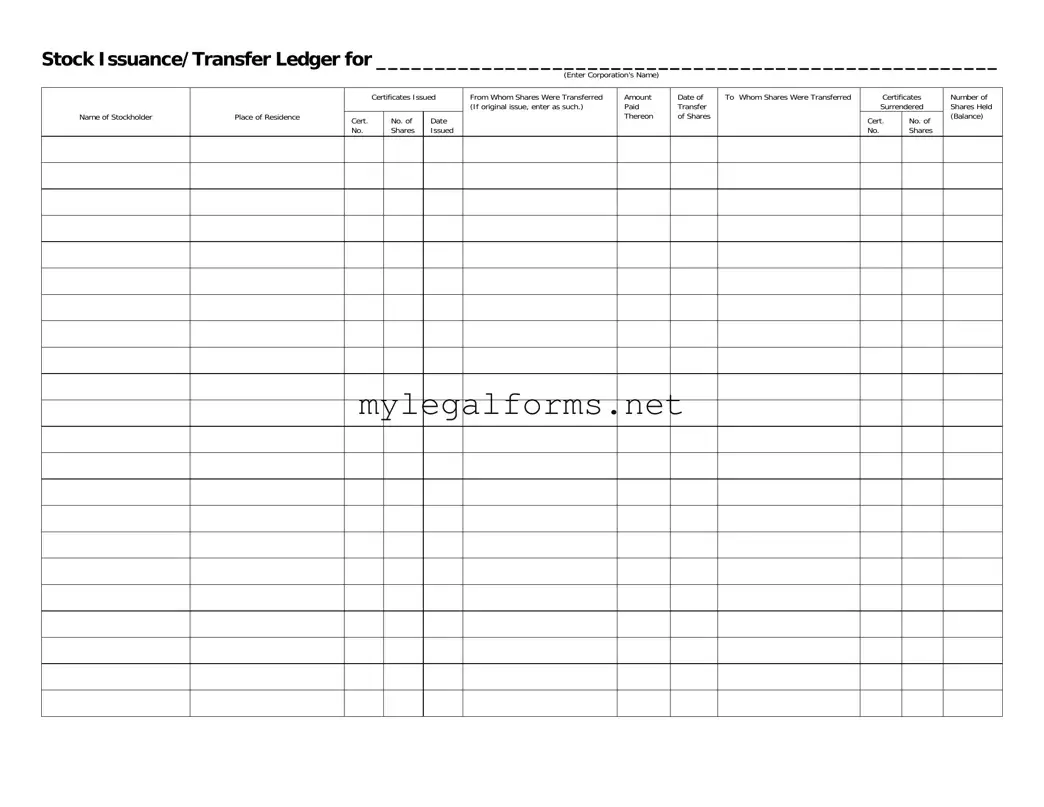The Stock Transfer Ledger form serves as an essential document in the world of corporate finance, providing a clear and organized method for tracking the issuance and transfer of shares within a corporation. At its core, the form allows corporations to maintain accurate records of stockholders and their respective holdings, ensuring transparency and accountability in ownership. Each entry captures vital information, including the name of the stockholder and their place of residence, which helps in identifying the individuals or entities involved in the stock transactions. Additionally, the form requires details about the certificates issued, such as certificate numbers and the date of issuance, allowing for precise tracking of shares over time. When shares are transferred, the ledger records the amount paid, the date of transfer, and the identity of the new stockholder, which is crucial for maintaining an accurate ownership structure. The requirement to surrender old certificates upon transfer further emphasizes the importance of this document in ensuring that the corporation’s records reflect the current state of ownership accurately. By keeping a detailed account of the number of shares held and the balance after each transaction, the Stock Transfer Ledger plays a pivotal role in corporate governance and compliance.

